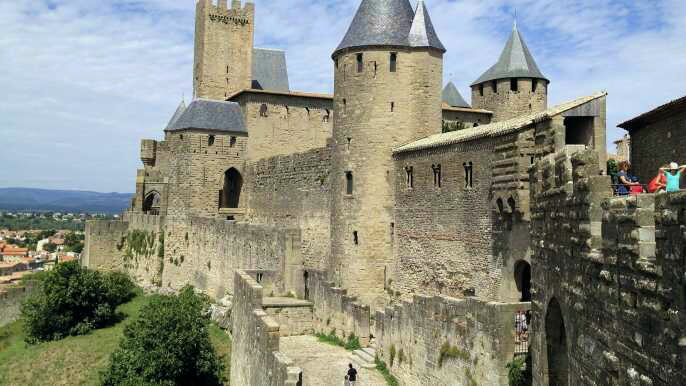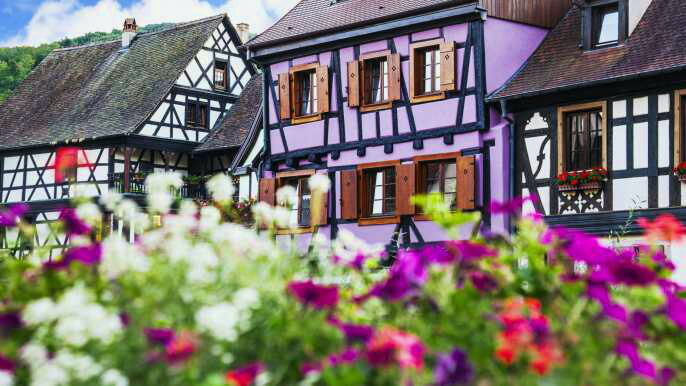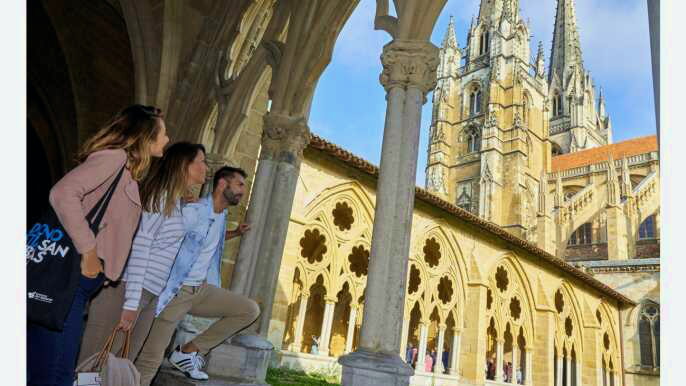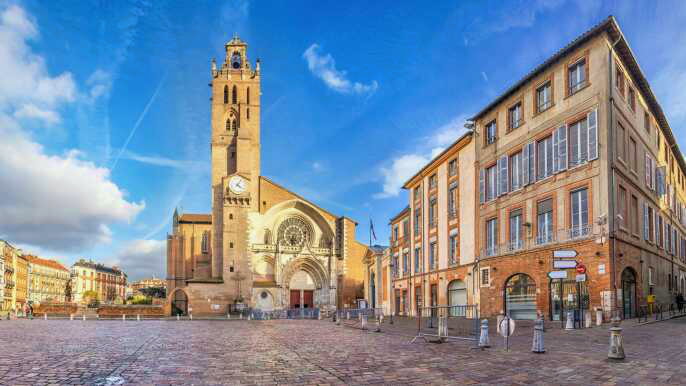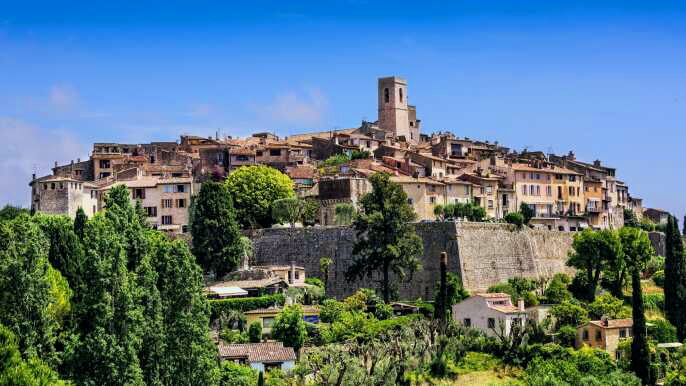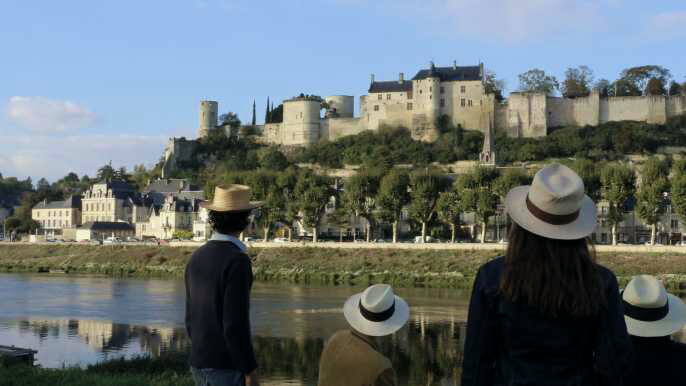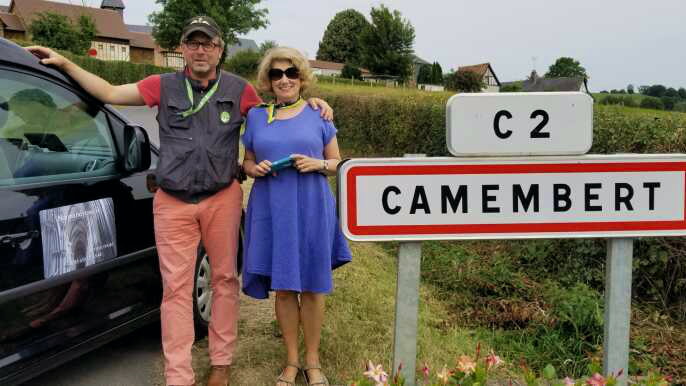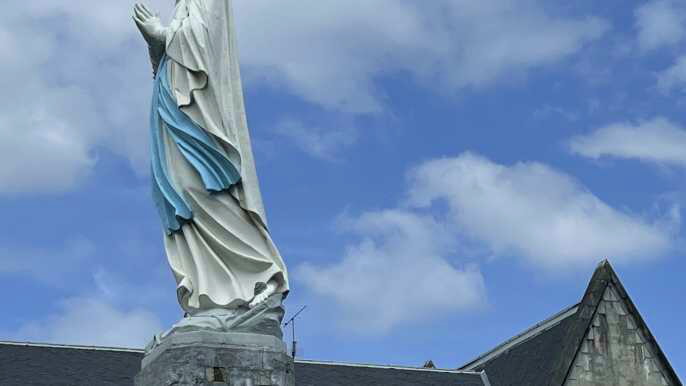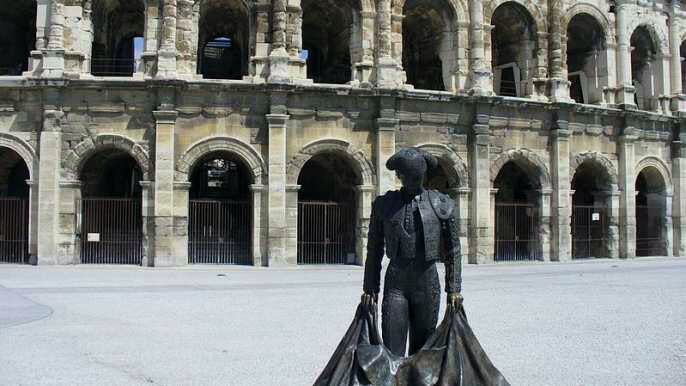The medieval town of Bayeux is living history, dotted with cobbled streets, half-timbered houses and the magnificent Notre Dame Cathedral. It also features the renowned Bayeux Tapestry, a UNESCO World Heritage Site and an unmissable attraction!
This ancient town was almost miraculously saved from the destruction that ravaged the rest of Normandy in WWII. Its historic centre is charming and its War Museum and British Cemetery are a reminder of the sacrifices made here.
1. Notre Dame Cathedral
Located in the middle of the medieval town, Notre Dame Cathedral (also known as Eglise de Bayeux) is a stunning piece of architecture. Built in 1077, it is a Norman Romanesque and Gothic blend.
The Cathedral is a great place to spend some time in this lovely little city and is easy to get to. You can view the spire from all over the town and the gothic interior is stunning, especially at night!
It is also worth seeing the beautiful crypt and ancient paintings. It is a must-visit for any history fan! There is also a really pretty courtyard next to the Cathedral with a tree that is said to be hundreds of years old!
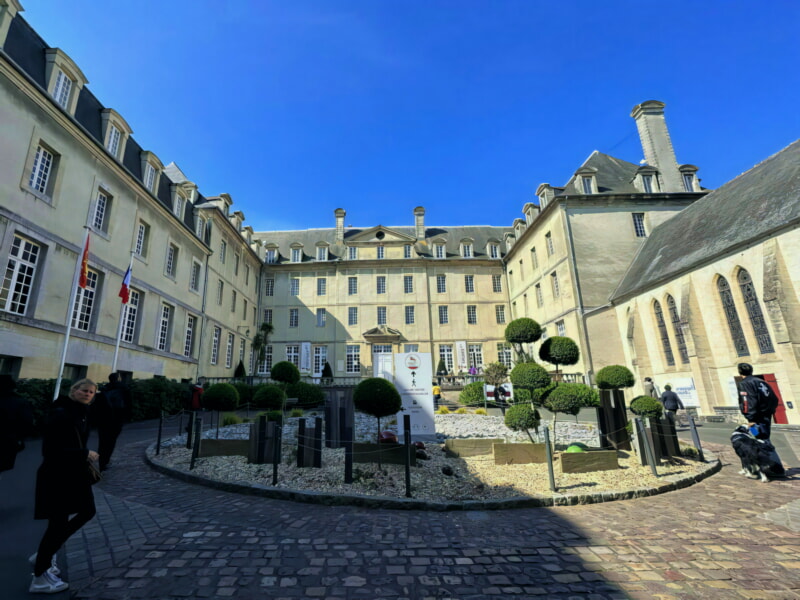
2. Bayeux Tapestry Museum
The Bayeux Tapestry Museum is a must-see for any history lover visiting this beautiful city. It displays the world-famous UNESCO-listed tapestry, depicting the Norman Conquest of England in 1066.
The tapestry is 230 feet (70m) long and is a magnificent work of art that was created in the 11th century. It is amazingly preserved and offers visitors an excellent insight into the history of William the Conqueror.
An audio guide in 16 languages, including ones for children, helps visitors learn the story behind the 58 scenes on the tapestry and the intricate details that are hidden within it. The museum also features a cinema room where a 16 minute film is regularly screened, alternating in French and English.
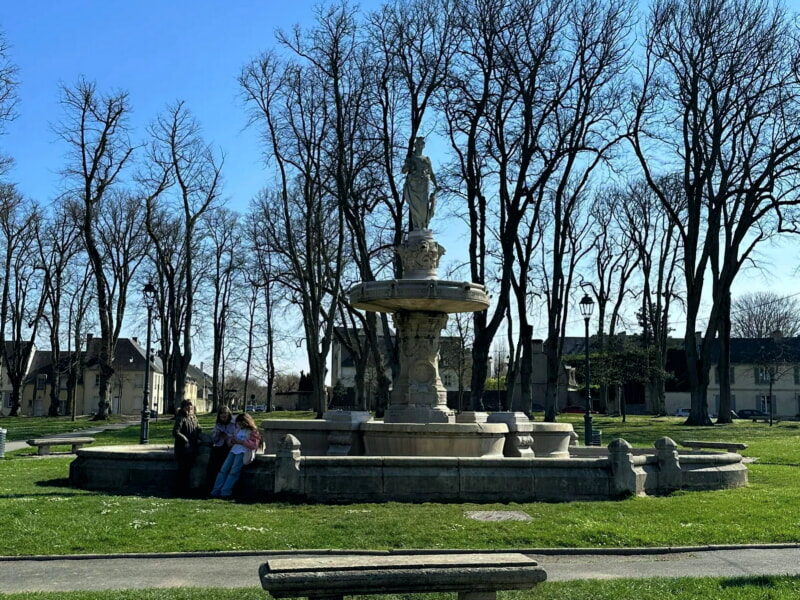
3. Bayeux War Museum
The Bayeux War Museum is located a short walk from the town centre and offers a fascinating insight into the Normandy landings. It relates how the Allies battled Germans during the first ten weeks after D-Day through a vast collection of photographs, documents and original equipment.
It also includes a twenty-five minute archive film as well as an area focusing on civilian life during the war. It is one of the most authentic and comprehensive museums of its kind on the French coast and a genuine gateway to the Landing Beaches.
It is also home to the Bayeux War Cemetery, the largest Commonwealth cemetery in France. It contains the graves of 4,144 Commonwealth soldiers and 466 Germans who died during the Second World War.
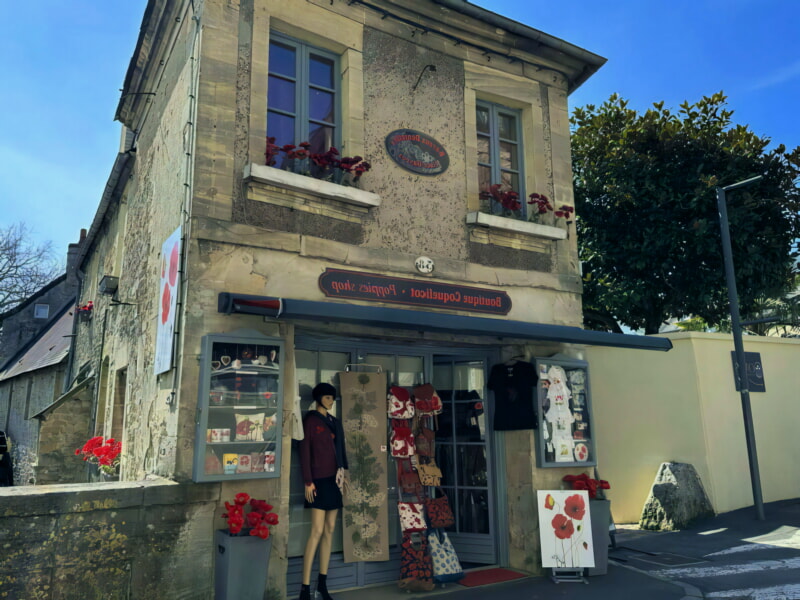
4. Bayeux Old Town
Bayeux is a lovely town to stroll through and just soak in the atmosphere. It was almost miraculously left undamaged during WWII so its essence and heart remain intact, making it a very pleasant place to visit.
The centre of Bayeux has a wonderful medieval feel with cobbled streets, half-timbered houses and cafes. Its Norman-Gothic cathedral dominates the skyline.
There is a lovely walking trail around the old town, marked with information boards and knowledge panels. Start at the tourist office on Rue Saint Jean and walk around the town, stopping to see the sites along the way.
You can also try to get a ticket for the little tourist train, which goes around the main points of interest in the city. It's an excellent way to explore and it's a nice idea if you're short on time!
5. Patricious Church
The Patricious Church is a beautiful and classic place to visit. It is named after the sixth Bishop of Bayeux, Patrice de Bayeux, who was born in this suburb and transformed his poor home into a church when his parents died.
The church was built to replace a Carolingian basilica that burned down in 1047 and it is mostly Gothic in appearance but with a Romanesque core. It was enlarged in the 13th and 15th centuries.
The diocese was ruled by several bishops, including Odo of Bayeux (1050-97) and William the Conqueror’s brother Lanfranc (1066-72). In 1042 a council was held, proclaimed by Duke William and the bishops of Normandy, to impose discipline in the diocese. Its statutes are preserved in many manuscripts. The diocese was also involved in religious warfare, including the crusades against paganism.
